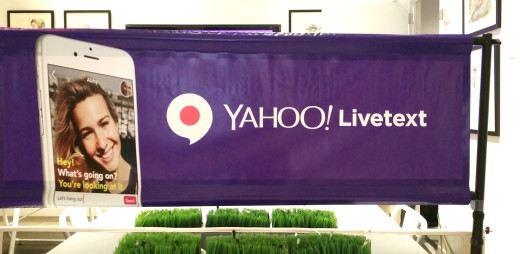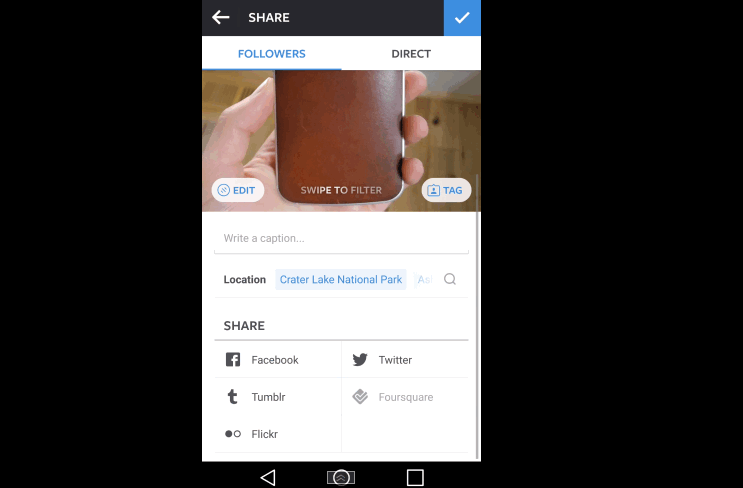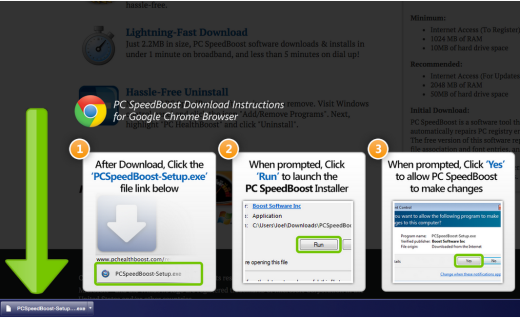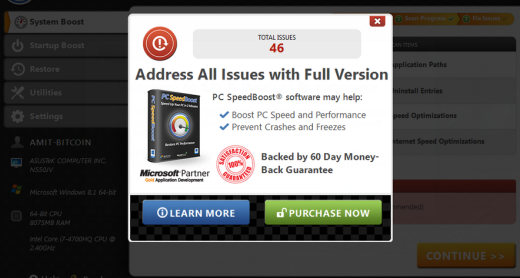
As you’re sitting down and reading this article, you’ll be both shocked and inspired by the roller coaster we went through to
hit #646 in the Inc 5000 list.
Before I get into the nitty gritty of how we went from zero to 8-figures in revenue in 18 months with our flagship product, I need to give you a bit of context of where we came from. Why?
Because often when people read an article about a business success story, they get the idea that the founders immediately struck gold and had massive success right from the get go. This is RARELY the case.
It took us two and a half years to get our flagship product launched. During those years, we barely kept our heads above the water. On three separate occasions, we nearly went bust.
Here’s more about that…
$125,000 Lesson:
Beware of Outsourced Software Development
I was naïve. There’s no other way to put it.
When my business partner and I first started Boost, we got ripped off to the tune of $125,000. It almost put us under. We had just started. We were not making any money and the company was extremely fragile.
I was self-funding the company. Putting my own money into it to keep it afloat. We thought to ourselves, “OK. We need a flagship product. We need to hire developers to build our product.” We found a development company based out of LA.
The guy sounded really professional. He was really charismatic and sounded like he’d be the perfect guy for the job. He claimed his team could create an amazing product for us. He even said he could help us market it. He wined us and dined us.
Within two weeks, we signed a contract with this guy. We did not have an attorney look it over. We even gave him the right to bill our credit card automatically every month!
Initially he said, “Oh, wait. Let me create a small product for you guys that will only cost you around $7,000 to $10,000.” So he did that. He delivered on it. It was actually a pretty good product, but not perfect.
But with that little bit of bait, he had us hooked. He delivered on that small project and now he was ready to lure us in for the kill. He understood the power of commitment and consistency. He knew he had us.
After the small project was complete, we started working on the main product, our PC optimizer. That’s when he started billing us $25,000 a month, month after month. No milestones. No deliverables. No functional specs or project plan.
He would just keep telling us: “OK, we’re almost there.” Occasionally he would share screenshots. He went on and on, “Oh, we’re almost there. I’ll have something to show you in a week. I’ll have something to show you in two weeks,” and kept pushing it off.
At one point, after racking up $125,000 in expenses, I just went to him and said, “Hey, we’re out of money. We have to stop. We can’t continue any longer.”
I’m embarrassed to talk about this. I could not believe how naïve I was back then. I didn’t know what to think at that point.
I suspected something was wrong but couldn’t put my finger on it. Then I went to an industry conference and I talked to somebody I highly respected. I told him about our experience. I said, “I have a bad feeling about it. He hasn’t delivered. We spent $125,000. We don’t know what’s going on?”
I mentioned the name of the guy we’d been working with. He said, “Oh yeah, that guy. That guy scammed about seven other people in our industry, including myself. I had to threaten to sue him before he agreed to complete our app.”
I was jaw slacked. Fist clenched. I was angry and stunned at the same time. I almost had a panic attack, realizing we had been taken by a professional con man to the tune of $125,000.
I went back and talked to my attorney immediately. Because I did not have my attorney look over the contract – I just signed it carte blanche – I had virtually no recourse. We didn’t have a solid case. That was a $125,000 learning lesson that I would never ever repeat again. We were not making any money.
Losing money at this stage was catastrophic for our company, and me personally, since it was all my money! We came really close to closing our doors.
It took us six months to recover from the $125,000 loss. Fortunately, we did manage to get some revenue coming in by selling a white label product. That kept us afloat.
We made a second attempt at developing our flagship product. We hired two contractors who said they could do the job. They were a referral. This time we did it right.
We had our attorney write up the contract that set out measurable milestones for development. All for a fixed cost of $50,000. We paid them at the end of each milestone, with the delivery of the latest code.
We also started with a detailed project plan and functional specs of the application. We made an upfront payment. Additional payments were sent out only after:
- A new development milestone was hit;
- We had a call detailing the progress, plus a code review;
- We officially signed off on the changes for that milestone.
If they didn’t hit the milestone, they didn’t get paid. That was the bottom line. We withheld the final payment (a huge chunk of change) until we gave them a thumbs up on the final product.
The good news is that we got our final product this time. However, it ended up being a disaster. It was a mess. It was crawling with bugs. Every other link you clicked on would cause the program to crash.
We ended up paying these guys the full $50,000 we owed them. They got 95 percent of the job done. I had to search long and hard on Elance to find two more developers who could get the job done.
These two new guys, Mariusz and Roberto, who were from Europe, turned out to be rockstars and became permanent members of the Boost team. We eventually fired our initial two developers. Mariusz and Roberto took over the product development completely.
Here’s the takeaway…
When hiring an outsourced development team to do a large project, you want to structure it as a fixed cost, milestone-based project with a strong binding legal agreement behind it. This will guarantee that you:
- Minimize your risk,
- Get your project completed and in a reasonable time period,
- And that you don’t get jerked around or cheated.
No conman will sign such an agreement. I talk more about the critical pitfalls you’ll face as you grow a company in my bestselling book. Later in this article, I’ll show you how to grab a free copy.
The Beating Will Continue Until Morale Improves
By now it was mid-2012 and we had finally launched our product! We had an Adwords campaign up and running. And yes, we were not only getting users but making actual sales as well.
Within six weeks, we started making around $15,000/month gross profit. It seems like a lot, but it was nothing to write home about. After paying our developers, support, and server costs there wasn’t much left in the kitty.
My business partner and I had a gut feeling that something was wrong!We couldn’t quite put our finger on it. Our free users just were not converting to paid users at a high enough rate.
We knew our landing pages were kicking butt. Between studying the competition and what we knew (based on our success as affiliates in this market in the past), getting users to download our product was not the problem.
To give you some context, our PC optimizer helped people clean their gunked up Windows machines. Anyone who has Windows PC knows what I’m talking about. The gunk is often a bloated Windows registry.
We used a freemium model to pitch our PC optimizer. Users could download, install, and remove unwanted programs (that automatically startup when you start your PC) and fix two categories of registry issues for free. If they wanted to fix all of their registry issues they had to upgrade to the paid premium version.
We had spent months tearing apart the product interface and users’ experience of top competitors. So we thought we had this nailed.
A year later, we discovered there was SO MUCH more to be done to really nail down the user experience. I’ll tell you what we discovered later (it’s a real eye opener).
We beat our heads to the wall for about a month or two trying to figure out what the heck was wrong.
Nasty Little Hidden Bugs
Finally, it dawned on me: why don’t we take a peek at what the users are actually seeing and experiencing?
We used a service called
usertesting.com. We had 10 people download, install and run our PC optimizer all the way through to the purchase page.
What we discovered shocked us. 4 out of the 10 of the user-testing users could not complete the system scan. They encountered a strange bug that froze our app.
What really baffled us was that we had done really rigorous quality assurance on our app. We tested it on different versions of Windows(r) XP, Vista, 7, etc. and we found no issues.
Then it hit us. All of our testing was done on CLEAN virtual machines. Real PCs, especially ones that are ‘gunked up,’ are a completely different beast. Just because your app works perfectly on a clean virtual machine, does NOT mean it will work on a beat up PC.
It’s Time to Go Bug Hunting
It was time to hunt down some bugs. We set up a tool called
Mantis. It’s a wicked cool and inexpensive way to track bugs, freezes, and crashes.
We added a checkbox to our install process to get permission from our users to collect this data, and we were off to the races! We pulled up the rug and found a mountain of garbage – it was almost unbelievable how many bugs our users were experiencing.
Our two rockstar developers were able to fix all these bugs within a week.Our app was now bulletproof. However, our conversions BARELY jumped. WTF?
Digging Deeper
Getting a startup off the ground can be GRUELLING. Especially after two and a half years of digging your feet in the sand.
Those years felt like purgatory. Constantly stressing about whether we’d make it past the next month, let alone make it at all. Anyways, sorry to ramble. I get emotional talking about this stuff.
So why did the conversion barely jump after we fixed all our show-stopping bugs? What we figured out was an absolute shocker. I’ll tell you in a sec.
Before I do, you need to understand one thing: every time you change something or fix a bug in your app it has a potential ripple effect that can change other parts of your application.
That’s why every change you make in your app must be rigorously A/B split tested. You need to scientifically determine whether the change you made is resulting in more paid users. The startup space is the world of sharks and bears. There’s NO room for magical thinking.
You got an idea. Great. You need to validate it. Prove that it’s helping your conversions. Making changes to your app and website on a hunch without testing is a one-way ticket to the poor house.
Don’t end up on the ash heap of failed startups. Test and validate everything. Get feedback from users and split test. Split test. And split test some more.
I recommend
Optimizely for split testing.
Mixpanel and
Google Analytics are great for analytics. So let’s get back to why our conversion barely jumped after fixing all those bugs in our app.
My business partner noticed that our system scan for our PC optimizer was suddenly running SUPER fast. It only took a few seconds. Before it took a few minutes because of all the bugs, those bugs were slowing down our app.
It occurred to us that the users might think the scan wasn’t doing much. After all it was super fast, what could it be possibly doing!
Now, in reality, doing a system scan did NOT take long. It was a fast process. We tested our competitors’ products and noticed that their scans ran slow. So we said to ourselves: “What the heck. Let’s test slowing down the scan!”
The results of our test were jaw dropping: our conversions almost DOUBLED. Our profits leaped to a solid four-figures a day. We were officially out of ‘ramen noodles and rent’ phase. It was an AMAZING feeling.
Now we had real cash flow. Enough money to invest into our business and start really growing our user base. Btw, we’re not the only company that slows down their scan/search to improve user experience. Sites like priceline.com, expedia.com, etc., do the same.
Run a search through these sites and check out the progress bar. I promise you that they’ve tested that and found it increased conversions.
Crazy, right? Later I’ll talk about some embarrassingly simple changes we made to our app and landing pages that skyrocketed our conversion rate into the stratosphere.
Before I do, I want to reveal how we doubled our order value.
Growth Hacking to 8-Figures
I like to call this 10X growth hacking. Because our run rate was already in the millions per year at this point. Our next goal was to growth hack to over $10 million a year.
What I didn’t realize at the time is that breaking the eight-figure barrier requires more than just having a high conversion rate and a high CLV (customer lifetime value).
It requires leadership and management skills. It also requires have a winning team and culture. It’s no wonder why so few companies break the eight-figure barrier. I’ll get more into that a little later.
For now let’s focus on two major breakthroughs that helped catapult our company into becoming a top player in our space.
How we Doubled our Order Value
We sold our PC optimizer at $30 for a one-year license, and $13 for an additional year on top of that. After merchant processing fees, we were left with a paltry $35 per sale.
$35 is not a lot to work with. We offered a driver update product to our customers that performed pretty well: 15 percent bought. However, this only added a few bucks to our order value.
Around this time (spring of 2012), we stumbled upon something amazing. We discovered our competitors were working with call centers that sold PC tech support.
Our competitors were getting a percentage of revenue of the tech support packages these call centers sold.
After a user purchased the software, they’d be asked to call a number for additional support. A call center rep would help them register their software and run a diagnostic on their PC. From there they would recommend a technical support package to help maintain the health of their PC.
This included removing viruses and malware and repairing deeper issues that PC optimization software could not fix. At first we were wary. We’d heard Indian call centers were doing some pretty deceptive stuff. So we stayed away from them.
After a few months, we tested a call center that we liked. Our customers were giving them rave reviews. And our refunds actually dropped!
On top of that, this call center gave us 30 percent of the revenue generated from tech support sales they made. We later discovered this was BELOW the market rate. However, at the time we were ecstatic!
The revenue we made from the call center DOUBLED our order value!
There’s a dark side to this story: years later we discover that one of the owners of this call center had worked closely with the Wolf of Wall Street. He even had a character in the movie based on him!
This would come back to haunt us in a big way. I talk about the gory details in my book.
Anyways, here’s the lesson: we didn’t come up with the idea of working with call centers and doing a rev share deal on tech support packages. The only thing we did was become an active participant in our industry through:
- networking at industry events,
- watching what our competitors were doing,
- following top blogs in our industry,
- keeping a look out for new companies, products, and services that could help us achieve our goals.
No business is built in isolation. Attend industry events, spy on analyze your competitors, and keep a look out for trends and breakthroughs.
Onboarding Your Users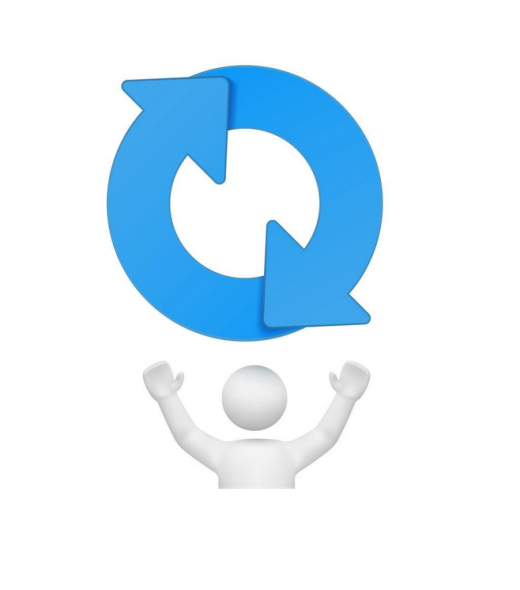
It’s shocking how many tech companies out there are obsessed with getting more and more users to sign up for their app. However, they turn a blind eye as to how many active users they have.
Who cares if you have 20,000 users signed up. If only a 100 of them are active, then guess what? You’re in BIG trouble.
At Boost, we didn’t care how many users actually downloaded our software (i.e. sign ups). The 2 metrics that were super important to us were:
- How many users actually installed our software (you would not believe the drop off between downloads and installs). Once they installed our software, we counted them as an active user.
- How many users actually purchased our software.
One of the biggest breakthroughs we made was instructing users on how to install our app after they had downloaded. I’ll show you what we did that in a sec.
If you’ve downloaded and installed a desktop application recently, you know that’s it’s extremely confusing. And it’s a different process on each browser.
It’s even worse, if you’re not tech savvy, like a lot of our users, then installing a software download can be a DAUNTING task. We found that up to 85 percent of site visitors that downloaded our app never installed it. Unreal.
This is a big reason why a web-based app converts so much better. You don’t have to worry about the confusing process of downloading and installing.
The problem I find with a lot of web-based SaaS apps is that they don’t properly onboard users on how to use the app. You need to hold your users by the hand and show them EXACTLY what to do.
Walk them through every major feature and even have users do simple tasks to demonstrate that they know how to use your app.
Salesforce does a great job with this.
Anyways, what did we do to double the number of users that actually installed our apps? We directed them with clear instructions on how to install after they downloaded. See below.
So there’re a couple things happening here:
- Green arrow pointing at where to access the download (this is different on every browser). The arrow is animated. It bobs up and down.
- Clear set of instructions – again, different for every browser. What you’re seeing above are the instructions for Chrome.
- Blacking out the background to completely direct the users to the task at hand: installing the software.
Would you believe this doubled our active user base and increased our sales by 30-50 percent (depending on the traffic source)?
The Magic of Touchpoints
Do you ever get sick of hearing about touchpoints? I do.
You’re told that that you have to reach out to prospects six to eight times before you can expect to turn them into a paying customer. Whether it’s by email, phone, SMS, Facebook, Twitter, or re-targeting. Keep tapping them on the shoulder and asking them to purchase.
I really didn’t get it. At first we were NOT reaching out to our users with multiple touchpoints. If they installed our software and didn’t pay immediately, we’d cross our fingers and hope they’d come back and upgrade to the paid version eventually.
Well, that rarely happened. I finally got the idea to have this lightbox appear right after our PC optimizer ran a maintenance scan:
Would you believe this little lightbox skyrocketed our sales!?!
Here’s why:
- It highlights the pain point: unresolved registry issues that can only be repaired with the full paid version of the software;
- Has a product box with some nice bullet points reminding users of the benefits of the software;
- Has a clear call to actions. “Address All Issues with Full Version” and “Purchase Now”;
- Risk Reversal: reminds users of the 60-day money back guarantee.
I now understood the magic of touchpoints. It’s all about timing. Most users are not ready to buy when they first start using your app. Give them time. And keep touching base with them until they buy. :)
Secret to Scaling Revenue to 8-Figures
At this point, we had dramatically improved our conversion rate and our CLV. There was only so much traffic we could buy from Google.
On top of that, we had hired a full-time employee (managing a staff of 10-15 outsourcers) to do social media and content marketing for us. We didn’t expect that to move the needle much though.
We were already doing $100,000+/month in gross profits. To grow our user base and profits further, we needed to tap into larger traffic sources that we could massively SCALE UP.
There’re a lot of ways companies go about doing this:
- If they’re b2b they may build a sales team to do cold calling and cold emailing at scale;
- They may build an in-house team to do: SEM, PR, blogging, social media, contextual and banner ads, etc.;
- Or they may outsource this by working with: agencies, ad networks, etc.
Depending on the company any combination of the above may make sense. However, before you decide what approach to take, you have to really understand what your strengths and weaknesses are.
Let me illustrate why… We chose option #3. We outsourced everything beyond social media and Adwords. Here’s why:
We were a development company at heart
Out of our 20 full-time employees, we had 1 sales guy and 1 social media lady. On the other hand, we had 10 developers, two QA people, two designers, etc.
As far as growth hacking and funnel optimization, it was all done by me and my business partner! We kicked up our feet and spent several hours a day brainstorming ideas on how to increase sales, conversions, and order value (big tip).
It didn’t make sense to hire an entire team that specialized in traffic generation. It just wasn’t one of our core competencies. Yes, I’m an expert at PPC marketing. However, I’m no expert at media buying or growing and managing a large team of affiliates.
There’s a caveat here
If you’re just starting out, I recommend that you do NOT completely outsource your traffic generation. Why? Because you need to get your feet wet in the beginning and really understand your market.
The process of trying to figure out how to get traffic to your apps that actually converts to active users will teach you a LOT about your market.
It will force you to ask hard questions and figure out:
- Who is my target market?
- Where do they hang out?
- How can I reach them?
- Do I have a product / market fit?
Before you outsource your traffic generation to an agency, you must:
- Validate that you have an app that people actually want to use and pay for!
- And that you know who these people are, and where they hang out online.
You also need to figure out:
- What ad copy and hook works best with my audience?
- What contextual and banner ads work best?
- What type of landing pages and lead generation convert best with my audience?
If you leave an agency to figure these points out, you’re bound to be sorely disappointed. No one should know more about your product and your market than YOU.
Keep in mind that my company was already doing several million a year in revenue before we started outsourcing our traffic and lead generation.
There was a second reason we started working with outside agencies: there was a very high level of sophistication and specialization required to scale our traffic and sales up to the next level.
There are entire companies out there – HUGE companies – that specialize in generating traffic for b2c offers using a variety of methodologies:
- Launching high traffic banner ads on targeted channels. These banner ads are then optimized to hit your target CAC (cost per acquiring a customer).
- Building an army of affiliates to promote your offer for you.
- Bundled installs: where an offer to install your app appears on an installer screen of another software.
- Contextual ads and content articles.
Working with Agencies, Ad Networks, and Affiliate Networks
We quickly discovered that just handing over our landing pages to an agency and wishing them luck was NOT going to work. Here are a few things we discovered really fast:
#1: Watch out for CPM buys
Never work with an agency on a CPM basis. Because it’s the fastest way to flush money down the toilet. Work with them on a lead basis. That means you only pay them when they generate a lead for you.
In our case, we pay them for each completed install of our software they generate for us. So it didn’t matter if they sent 100,000 clicks to our site, if it only generated 1 completed install, that’s all we paid for!
#2: Make sure your leads are “backing out.”
If the leads the agency is generating for you are not resulting in sales, you’ve got a problem. We paid the companies we worked with anywhere from 0.50-$5.00 per completed install (that was our cpi = cost per install).
However, it wasn’t enough to get just an install of our software. We needed to make sure these installs resulted in enough sales to produce a positive ROI for us.
We set a target CAC of around $50. Every company we worked with understood that they had to optimize our campaign until they hit our target CAC of $50.
If they didn’t hit $50 CAC. We’d shut ‘em down. Let me elaborate a bit. $50 CAC means for every $50 we spend with an advertising agency, we made (on average) 1 sale.
Now our order value was roughly $70. So we needed $20 gross profit for every $50 we spent. So, for example, if we spend $10,000 a day with an agency at $50 CAC. We made 200 sales and $4,000 a day gross profit.
In practice, maintaining our target $50 CAC required constant management. We had a full-time salesperson talk to our agency account reps several times a week.
We had to watch our numbers like a hawk to make sure our agencies were making us money. Working effectively with ad agencies and affiliate networks was as much of an art as it was a science.
It wasn’t just about numbers. It was also about relationships. The stronger the relationship we had with our account reps, the more likely they were to focus on and push our offer while keeping our competitors at bay.
This is where intangibles like leadership and people skills come in. It doesn’t matter if you have an in-house team or an outsourced team. Leadership skills matter. I’ll delve more into that in my book.
We ended up spending up to $30,000 a day on advertising at our peak. All while maintaining solid profitability and high margins.
Why is This so Freaking Effective? Some Takeaways
We focused our efforts on creating the highest converting product flow, landing pages, and cart pages. We obsessively growth hacked the whole sales funnel until we were blue in the face from split testing. We ended up increasing our conversion rate by over 500% and doubling our order value in a matter of 12 months.
We systematically tested our product. We identified and repaired bugs. We did rigorous A/B split testing, tested different versions of the product and landing page over and over again.
We discovered some really crazy stuff that skyrocketed our sales conversion. This allowed us to profitably buy more and more advertising.
We went from a nobody to the talk of the industry. We did all of this just by consistently growth hacking.
Well, growth hacking plus expanding our sales channels. Realize this though:higher conversion allows you to outspend your competitors, buy more traffic (or leads) and tilt the entire marketplace in your favor.
This is true whether you’re doing cold emails and cold calling for b2b leads or banners ads to directly sell a consumer product. If you convert more cold calls and cold emails to sales than your competitor, all with a lower churn rate, what do you think will happen over time?
That’s right, you will completely dominate, even if your product is very similar to your competitors. Start fanatically working day and night to improve the conversion rate and ROI on your sales and marketing, and watch what happens to your business. If done properly, you can quickly transform your business from a timid kitten to roaring lion.
We launched our flagship product in May of 2012. By the end of 2013, we generated $11.6 million in revenue – in 2013 alone. The following year was rough; however, we still had a $10 million run rate. Yes, it can happen thatfast. However, if there are any holes in your strategy, things can start falling apart just as fast.
And that’s exactly what happened: our company went bust at the end of 2014.
I tell the whole story in my book and reveal how to avoid 9 hidden traps (“risk hacks”) that can destroy your business.
As you read this book you’ll discover:
- Why falling into this trap can lead to the infamous business partner default.
- Why confusing what type of business you have can leave your company cash-strapped and on the verge of bankruptcy.
- Why fast growth and quick success can be your greatest enemy.
- How to avoid entrepreneurial ADD & develop a strategy to obliterate your competition.
- Little known tricks for turning your company into a cash flowing machine.
- When to, and when NOT to, use this leverage instrument.
- How to turn your company into an impregnable ship.
- A common and easy to avoid mistake that can cost you millions.
After you
">download and read the book, and apply some of the growth hacking tips in this article, please let me know how your experience goes!




